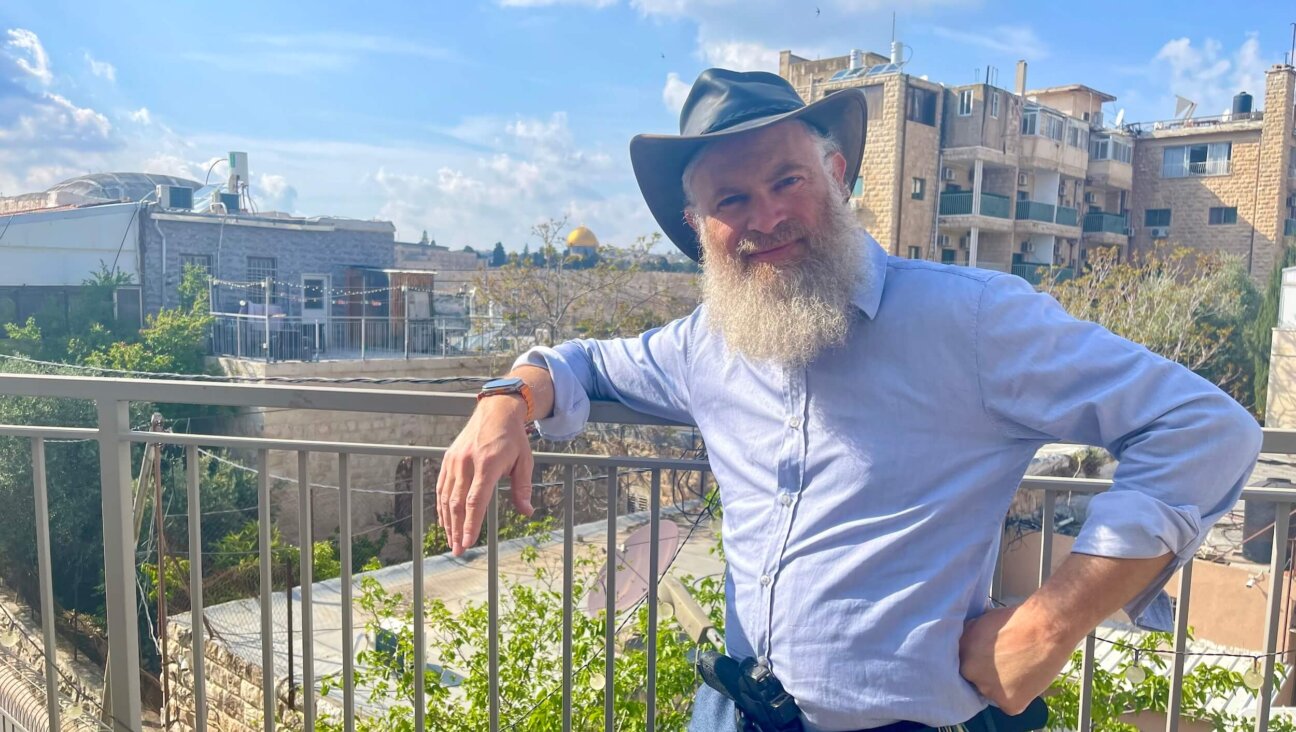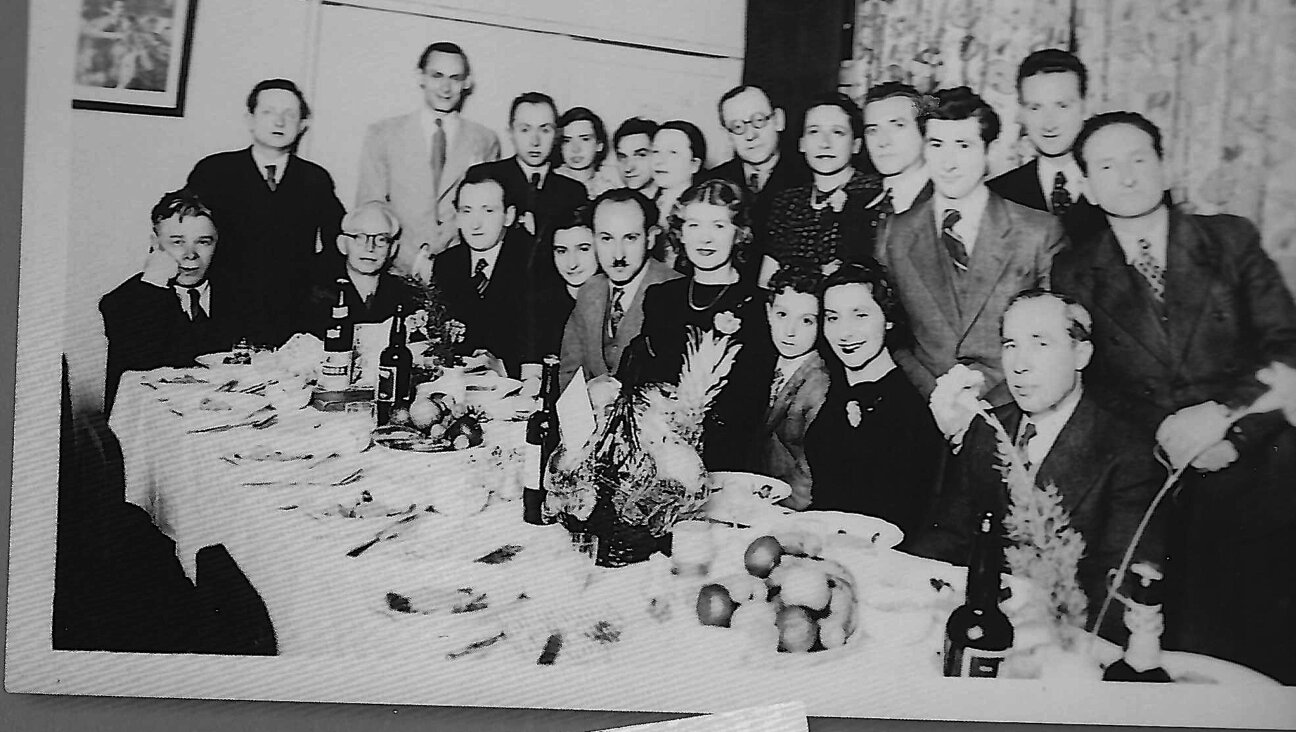Freeze My Eggs — Please!

Image by Lior Zaltzman
The elevator doors in a tall building next to New York’s Central Park opened to an immaculate, spacious office. There were at least 15 women sitting quietly on white couches, next to a table offering coffee and tea. They appeared to be in their 30s; some seemed optimistic, others worried, a few joyful. Most of the women were Caucasian, and a couple were Orthodox Jews. Some were dressed as if they were on their lunch break from work. I walked past them nervously and approached the reception desk of the fertility clinic.
“Reason for visit?” asked the woman behind the desk, sounding official.
“I’m here to speak with a doctor about egg freezing.” It was as if a cartoon version of myself spoke those words. I couldn’t believe they were leaving my mouth.
“First time here?” she continued.
When I said yes, she handed me several papers to fill out, and told me to keep an eye out for my name on one of the large screens. I’d be there for three hours, she said.
I completed my paperwork and thought about motherhood. I was from a Modern Orthodox Jewish family and both my sisters were married with three kids each. As the youngest, I wanted to follow in their footsteps and stick to the plan my parents had instilled in us. For generations, specifically during the decades post-Holocaust, Jews multiplied. A lot. And I had an itch to be a part of that process. Yet here I was, 34, and single — and about to freeze my eggs, so my biological clock would tick a bit more slowly.
Over the past decade, oocyte cryopreservation, the technical term for the procedure of preserving women’s eggs through freezing, has become increasingly popular. The first successful pregnancy resulting from a frozen egg was reported in 1986, and technological advances in the past few years have to date made it possible for more than 2,000 babies to be born from frozen eggs. Initially a method to help women preserve their fertility while undergoing chemotherapy, others have come to use it as a powerful family planning tool.
Last fall, Facebook and Apple, along with other major finance companies such as Citigroup and JPMorgan Chase, announced that they would cover up to $20,000 of the cost of egg freezing for employees who wanted to undergo the procedure. And egg-freezing parties in New York and Silicon Valley have received some attention in the past months. For me, this was not a party.
Ding! I looked up at the announcement screen and saw my name highlighted. I made my way to the consultation area.
“Why have you decided to freeze your eggs?” The smiling nurse asked almost before I could sit down across from her.
“Because I’m over 30, I don’t know where I’m going to be tomorrow, let alone in two years, but I know I want kids.”
Her next question landed on me hard. “Why now?”
I took a long pause, exhaled and felt hot tears fill my eyes. “Because three months ago I thought I’d be well on my way to motherhood.”
Three months earlier, my boyfriend had told me that he had reunited with a former girlfriend. During the three years we had dated on and off, he had asked me many times to have a child with him, but I was doing my best to follow the fairy tale: first comes love, then marriage, and finally, the crowning glory, a baby. So when he told me that he was in love with someone else, I found myself somewhere between the mattress and the box spring: inconsolable, destructive, reclusive.
The pain of saying, “I’m single,” crippled me. Comparing myself to my married sisters made me feel like a failure. The sideways looks from the congregants at the Orthodox synagogue where my father was president were a mixture of worry and pity. “Where’s your husband and kids?” was the most common question I’d hear. I wanted those things and I had convinced myself that my ex was the last stop on the family train. Naturally, I drowned myself in tequila and resentment. I got lost from club to lounge, lubricating my pain with my new lovers: Don Julio, DeLeón and Patrón.
One afternoon, after my friend Stephanie had listened to me dissect my breakup in to a thousand pieces, she spoke. “I know you’re in pain,” she began. “Can I make a suggestion?”
“Please,” I responded.
“Freeze your eggs. I did it, and it’s one of the best investments I ever made.”
I let her statement marinate in silence, but my brain was running a 50-yard dash of questions. “How much would it cost me? How long will my eggs last? Is this the route I should take?”
As a single woman aged 40, Stephanie knew that one day she wanted to have kids. She had frozen five eggs and finally felt she could quit panicking about her future as a mom.
I went home and scoured the website of the fertility clinic in New York City Stephanie had recommended. For two hours, I read countless stories of women who froze their eggs and later gave birth to healthy, beautiful babies. I also researched the medical side of egg freezing: the hormones, the procedure itself, the doctors and their methods. I called my parents that same evening and told them I was considering egg freezing. “All we ask is that you research this extensively and speak with the doctor. Ask a lot of questions,” my mom said. “We love you, pal. And we understand. Best of luck,” Dad added. Any lingering doubts were gone after my parents had shown their support. After all, they had always trusted us children to make smart choices. The next afternoon I made an appointment for a consultation — and found myself tearing up in front of a stranger a few days later.
When the nurse saw my tears, she folded her hands and sweetly said, “We recommend egg freezing for women between the ages of 25 to 34. You’ve come at a perfect time.”
She walked me down the hall to meet the doctor, a small man wearing a white, starched lab coat, his hair parted to one side. The plaque on the door of his corner office overlooking the park had so many abbreviations after his name, I knew I was dealing with some sort of genius.
He explained that the clinic was using a fairly new technique called Vitrification. Eggs are difficult to preserve because they contain a lot of water, and the ice crystals that form during the freezing process can destroy their delicate structure. Vitrification, however, is a flash freezing process whereby the eggs are frozen so quickly that ice crystals don’t have time to form. Therefore, the doctor said, up to 98% of the eggs remain usable after they have been stored to be inseminated and implanted into the uterus, a process known as in vitro fertilization.
Next we discussed costs. The medical procedure of egg retrieval, excluding the cost of hormones, was $4,500. After six months, there would be a fee of $100 per month to preserve my eggs. In addition, if I ended up needing my eggs for in vitro fertilization, that would cost around $10,000. It was a lot of money, considering I was a full-time student holding a part-time job as a VIP director at a nightlife company in Manhattan. My health insurance through the New School only covered $350 for the initial visit. Right there and then I made the decision to take $4,500 out of savings and invest it into my future. My mother and two sisters had become pregnant quite easily. Therefore, I was optimistic that I wouldn’t need in vitro fertilization.
The doctor performed an ultrasound to count the number of follicles, which contain the eggs, in each ovary. He inserted the gel-covered instrument into my vagina, rolled it over each ovary, and a number of tiny dark dots became visible. In preparation for the egg freezing procedure, hormones are given to stimulate the ovaries in order to produce a larger number of mature eggs (most women just produce one every month). In most cases, injections of gonadotropins are prescribed, but I opted to take pills, the two fertility drugs Clomid and Femara, which produce fewer eggs than the gonadotropin injections, but are only $150 instead of $750.
I returned six days later for blood work and more sonograms. My ovaries were responding to the medication, and on the sonogram screen the doctor counted that I had produced three eggs.
On the morning of the egg retrieval procedure, four days later, I felt squirmy. The soft spoken, calm, kind doctor shook my hand as if we were just two people in the same room playing different roles, rather than him holding the golden key to my path to motherhood — which was how I had come to see him.
“Everything looks great,” he told me. “It seems you’ve produced five eggs.”
Five eggs! That was more than he had predicted. I was thrilled.
He gave me a shot of the local anesthetic lidocaine in each ovary. It stung briefly. Next he inserted a thin needle through the upper part of my vagina into my ovaries to retrieve the eggs — three from my left and two from my right. On a small, black screen in front of me, I could see the white tube-like instrument suctioning my eggs. They resembled tiny fish-like objects and looked as if they were rescued to safety. It was truly one of the most fascinating things I’ve ever seen. The procedure was finished after only 10 minutes.
As I drank water in an upright chair outside the operating room, hoping the slight cramping would dissipate, I wondered how I ended up here: in a hospital gown, single, silent and alone. For so long I wanted to make my ex-boyfriend accountable for my failed attempt at motherhood. But he wasn’t responsible for me. By the second glass of water, I felt different, even empowered. I realized that what had screwed me up most was my idea of how it was supposed to be. I knew I wouldn’t accept any more convincing fairy tales as realistic possibilities. In that recovery chair I was optimistic because I had gotten what I wanted most: another chance.
Three weeks after the retrieval, a friend set me up with Aaron: a smart, gorgeous, half-Israeli, 36-year-old single father. We’ve been dating for eight months, and recently spoke of our wish to have kids. I was relieved I could tell him, “Don’t worry, I’m in no rush because I recently froze time.”
Susie Kantar is a freelance writer living in Manhattan. Her most recent work has appeared in Cosmopolitan. Follow her on twitter @susiekantar

I hope you appreciated this article. Before you go, I’d like to ask you to please support the Forward’s award-winning journalism this Passover.
In this age of misinformation, our work is needed like never before. We report on the news that matters most to American Jews, driven by truth, not ideology.
At a time when newsrooms are closing or cutting back, the Forward has removed its paywall. That means for the first time in our 126-year history, Forward journalism is free to everyone, everywhere. With an ongoing war, rising antisemitism, and a flood of disinformation that may affect the upcoming election, we believe that free and open access to Jewish journalism is imperative.
Readers like you make it all possible. Right now, we’re in the middle of our Passover Pledge Drive and we need 500 people to step up and make a gift to sustain our trustworthy, independent journalism.
Make a gift of any size and become a Forward member today. You’ll support our mission to tell the American Jewish story fully and fairly.
— Rachel Fishman Feddersen, Publisher and CEO
Join our mission to tell the Jewish story fully and fairly.
Our Goal: 500 gifts during our Passover Pledge Drive!
























